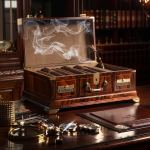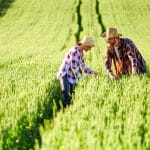Birds are delightful animals, their chirping melodies and vibrant plumage adding color and liveliness to our homes. However, as pet owners, you must recognize that birds are sensitive creatures. Their health and well-being hinge on the quality of care they receive. This is not confined to just their diet and interaction, but also extends to the environment in which they live. For a caged bird, this environment is primarily their cage. Therefore, identifying and eliminating any potential hazards within that environment is of paramount importance.
Ensuring a Safe Cage Environment
Just as people cherish their personal space, birds too, consider their cage as their sanctuary. Hence, it is crucial to ensure that it is safe, hazard-free, and conducive to their physical and emotional well-being. Maintaining a healthy cage environment for your avian pet involves more than just regular cleaning and provision of food and water.
This might interest you : How Can You Train a Parakeet to Perform Complex Tricks Using a Flight Harness?
Foremost on the agenda should be the safety of the cage material. Toxic metals such as lead or zinc can pose severe health threats to birds. Even in minute quantities, these metals can trigger heavy metal poisoning leading to severe illness or even death. You should ensure that the cage is constructed from bird-safe materials like stainless steel, powder-coated or baked-on paint cages.
Cage bars should be appropriately spaced to prevent birds from getting their heads stuck between them. The cage’s size should provide ample room for the bird to move freely and stretch its wings without hindrance.
Also to discover : What’s the Best Way to Support a Dog with Chronic Pancreatitis Through Diet?
Next, consider the placement of the cage. It should be away from direct sunlight, drafts, and sources of extreme temperature fluctuations, as birds are sensitive to such changes.
Identifying and Removing Toxic Hazards
Whilst you may go to great lengths to ensure your bird’s cage is safe, remember, hazards can sometimes be lurking in the most unexpected places. As pet owners, you must be vigilant and proactive in identifying and eliminating these dangers.
Birds have an instinct to chew, and they will nibble on anything they can get their beaks on, including toys, perches, and even the cage bars. Therefore, one of the most significant hazards inside a bird’s cage is toxic substances in these chewable items. Toys painted with lead-based paints, perches treated with harmful chemicals, or even rust on the cage bars can be lethal to the bird.
A common mistake many pet owners make is using air fresheners, scented candles, or essential oil diffusers near the birdcage. Birds have a highly developed respiratory system which makes them extremely sensitive to strong odors and chemical fumes. Such products can cause respiratory distress and should be avoided.
Ensuring a Healthy Bird Diet
Food and water, although essential for the bird’s survival, can also become health hazards if not managed correctly. Birds, like people, require a balanced diet for their overall health. Commercial bird food should be of a reputable brand, and its ingredients should be checked to ensure they do not contain harmful additives or preservatives.
Fresh fruits and vegetables are an excellent supplement to a bird’s diet, but they should be thoroughly washed to remove any toxic pesticides. Also, be sure to remove any uneaten fresh food after a couple of hours to prevent bacterial growth.
Water should be fresh and changed daily. Using a water bottle instead of a dish helps to keep the water clean and free from droppings or food particles.
Creating an Enriching Environment
Providing an enriching environment for your pet bird helps in keeping it mentally stimulated and physically active, contributing to its overall health. However, every item you introduce into the cage must be safe and non-toxic.
Toys play a crucial role in a bird’s life. They help to curb boredom and foster natural behaviors like foraging. However, you should make sure that all toys are safe for birds. Avoid toys with small, detachable parts that can be easily swallowed or those with sharp edges that could cause injury.
Perches of different sizes, shapes, and textures can help keep a bird’s feet healthy. But ensure that they are free from toxic materials. Using natural branches from bird-safe trees can be an excellent option for perches.
With these safety measures in place, you can help ensure that your pet bird remains secure, healthy, and happy in its cage. Remember, the key to a healthy bird lies in providing it with a safe, clean, and enriching environment.
Avoiding Common Household Hazards
Your pet bird’s safety goes beyond just the cage. It also involves mitigating the dangers lurking in your home environment. Common household items can, unknowingly, pose potential health risks to your bird.
Ceiling fans, for instance, are one such danger. Birds, especially ones that are allowed to fly freely within the house, can easily collide with the moving blades, resulting in severe injuries. When your bird is out of its cage, make sure to turn off all ceiling fans.
Another significant threat to birds is electrical cords. Birds have a natural instinct to chew, and they may be drawn to the enticing texture of these cords. To keep birds safe, it’s important to conceal or cover all accessible cords to prevent the bird from gnawing at them and possibly getting electrocuted.
Keeping other pets like cats and dogs in the same environment as your bird can also pose a threat. While it’s possible for dogs, cats, and birds to coexist peacefully, it’s crucial to monitor their interaction closely to prevent any potential harm to your feathered friend.
Birds have a highly sensitive respiratory system. As such, they are particularly susceptible to airborne toxins, including those released by many common household cleaning products. These products can release fumes that can lead to severe respiratory distress in birds. Therefore, consider using bird-safe cleaning products and ensure proper ventilation when cleaning.
As pet owners, it’s also essential to be mindful of the risk of disease transmission. Always remember to wash hands before and after handling your bird to protect both you and your pet from health problems.
Conclusion
Owning a pet bird is a delightful experience filled with melodious chirping and colorful plumage. However, it’s essential to understand that these creatures are sensitive and require meticulous care and attention. Ensuring their well-being goes beyond providing a balanced diet and involves creating a safe living environment both inside and outside the bird cage.
As bird owners, you must be vigilant in identifying and eliminating potential hazards that could harm your bird. From selecting a safe cage constructed with bird-friendly materials, removing harmful toxins, and offering a balanced diet, to creating an enriching environment and managing household hazards, every step contributes to your bird’s overall health and happiness.
Always remember, maintaining the safety and health of your bird is paramount. With proper care, attention, and a healthy environment, your bird can thrive, bringing joy and color into your life for many years to come.












